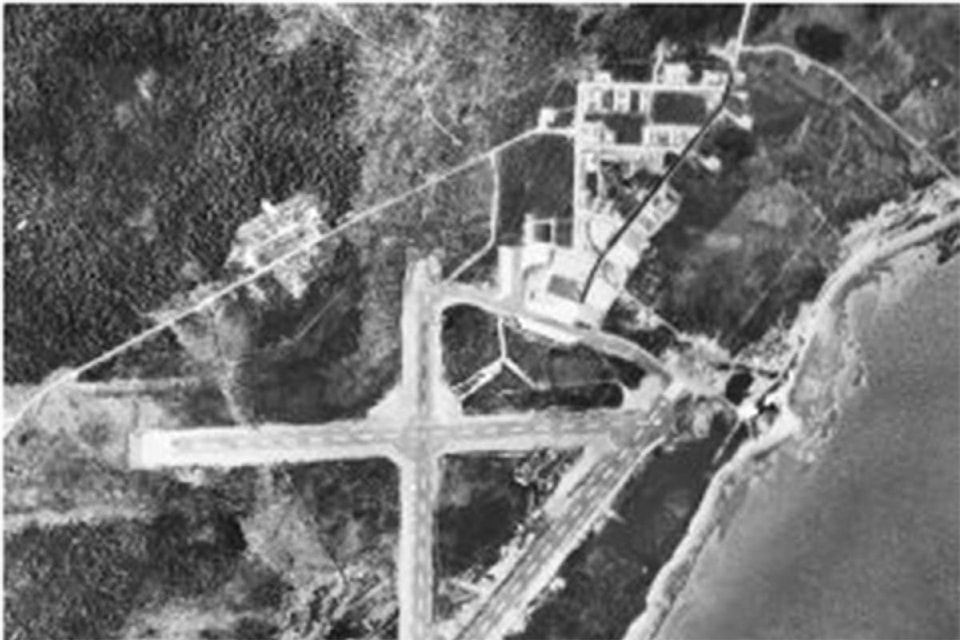Hidden by a grove of trees, locals can take a little dirt path into what is known as Jokerville, which used to be a residential area for WWII airmen who worked on a nearby military base.
This week 75 years ago, the No. 8 Squadron of the Royal Canadian Air Force was reassigned to a new station, Jokerville. With them came a Lockheed Vega Ventura G.R., according to a Sept. 2015 plaque labelled “RCAF Station Port Hardy.”
The Lockheed Ventura was a twin-engine bomber used in WWII during daylight attacks against parts of Europe which were occupied.
| San Diego Air and Space Museum Archive photo What a typical Lockheed PV-1 "Ventura" patrol bomber may look like, circa 1942. |
Jokerville, it’s said, was “sufficiently advanced on Dec. 10, 1943, to accommodate one (bomber reconnaissance) squadron.” Authority was given by Western Air Command by Secret Organization Order No. 117. No. 8 Squadron had served in Alaska prior.
The station became fully operational in January 1944 with about several hundred men. The homes in which they lived were constructed by the airmen in the same way, in the same fashion. At the time, a military home built in Port Hardy was exactly the same as a building made in, say, RCAF Station Dartmouth during the Second World War era.
The house typically had two rooms, a bedroom and a living room which also duelled as a kitchen. These sorts of houses could be more commonly known as a story-and-a-half home.
As of January 1944, while late to war efforts, the Port Hardy RCAF station was fully capable and operating. Wing Commander R.H. Little was the commanding officer of the station. R.H. Little was part of the No. 3 Bombing and Gunnery School prior to reassignment.
| THOMAS KERVIN PHOTO The heritage building, a WWII era hangar built by the RCAF, still stands today. |
The station would then be primarily used for weather reporting services and stop-over and refueling needs. During the WWII wartime efforts, the U.S. Air Force sent aircraft to fuel up when travelling from Alaska. The U.S. also regularly used the base as a stop-over when sending supplies to the Alaskan base.
In what was originally an aerodrome - a place in which military air force operations take place - eventually converted into Port Hardy’s airport. The last originally standing infrastructure, the big hanger, also turned into a heritage building.
- with files from 101 Squadron (North Island) and A Dream Come True: Port Hardy 1904-2004 by Port Hardy Heritage Society.
